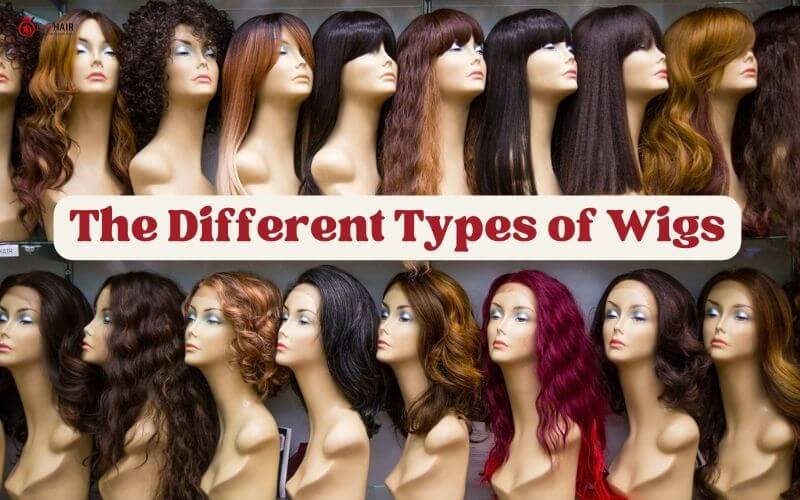Wigs have emerged as versatile accessories in the realms of beauty, fashion. And play a crucial role in concealing hair loss, allowing individuals to experiment with various looks. However, the wide array of wig options can be overwhelming for enthusiasts. This article aims to guide you through the different types of wigs available, helping you make informed decisions about your wig choices.
1. Classify different types of wigs
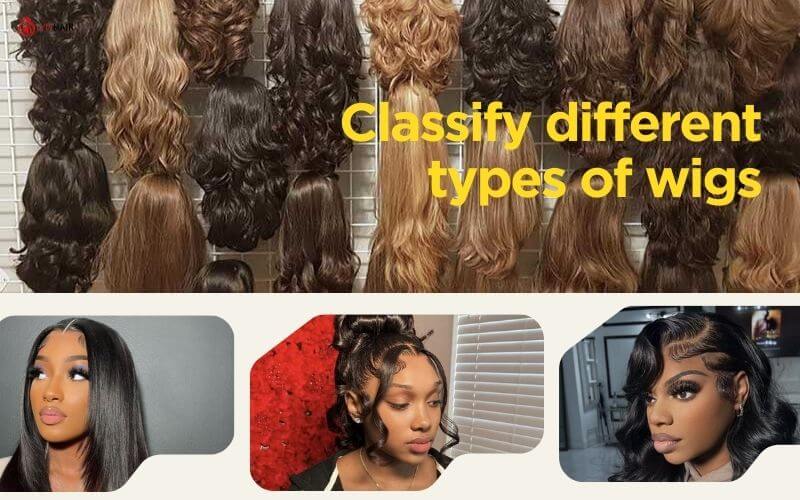
Wigs come in an extensive range of styles and types, each meticulously tailored to cater to a diverse spectrum of individual preferences and specific requirements. These classifications typically consider several crucial factors, such as cap construction, hair material, attachment methods, different types of lace wigs, and coverage.
By categorizing wigs through these criteria, individuals can readily identify and choose the perfect wig that aligns with their unique style, comfort, and lifestyle needs. In the following sections, we’ll provide a thorough breakdown of the classification for each type of wig.
2. Different types of wigs base on Cap Construction
Lace front wigs / (Frontal/closure)
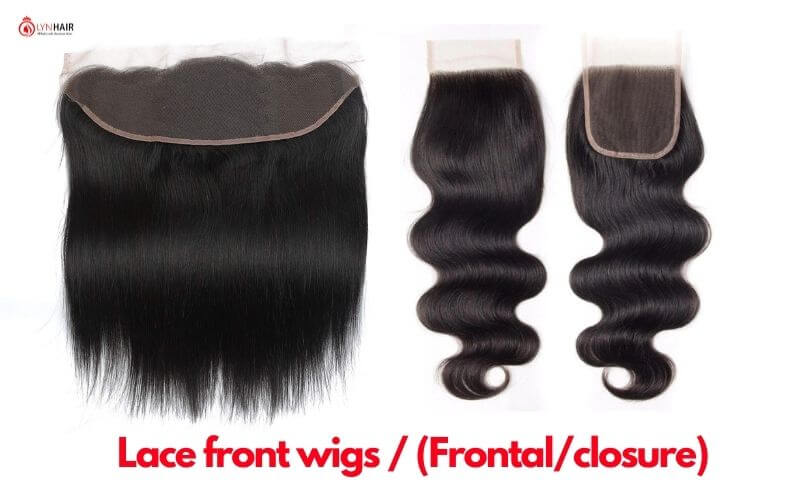
Lace front wigs are a popular choice among wig wearers because they feature a sheer lace panel along the front of the wig. This lace mimics the appearance of a natural hairline, providing a realistic and seamless look. Lace front wigs can be styled in various ways and are often used with a closure or frontal piece to complete the look. They are prized for their ability to blend seamlessly with the wearer’s natural hairline.
360 Lace frontal wigs
These wigs take the concept of lace fronts a step further. Instead of just having lace at the front, 360 lace frontal wigs feature lace all around the perimeter of the cap. This means you can style your hair in ponytails, updos, or any other way you like while maintaining a natural-looking hairline from every angle. They are incredibly versatile and offer a high level of customization.
Full Lace Wigs:
Full lace wigs take cap construction to the next level. In these wigs, the entire cap is made of lace, not just the front. This construction offers the most flexibility in terms of styling, as you can part your hair anywhere on the cap, and it will look as if the hair is growing directly from your scalp. Full lace wigs are often considered the most realistic and are a favorite among those seeking an authentic appearance.
Full cap wig
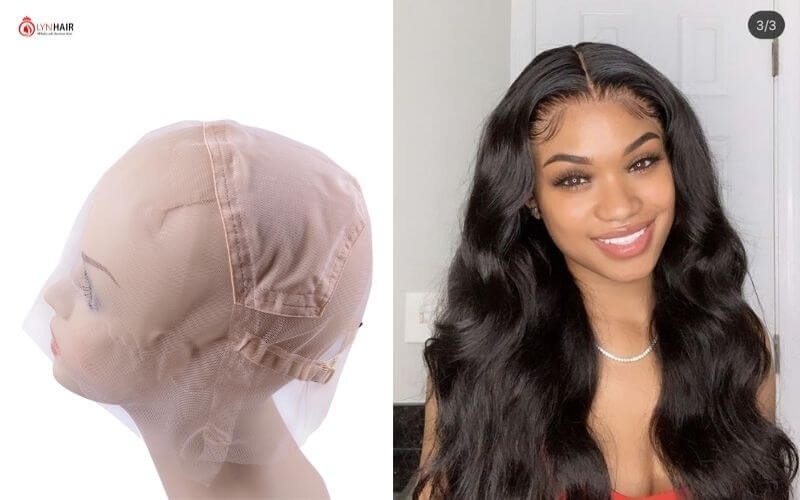
These wigs cover the entire head with wefts of hair sewn onto a stretchy cap. While they may not offer the same level of customization and realism as lace front or full lace wigs, they are incredibly convenient and easy to wear. They are often chosen for their simplicity and comfort.
Monofilament wigs
Monofilament wigs are renowned for their realistic scalp appearance. They feature a fine, breathable mesh material at the crown of the cap, where each hair strand is individually hand-tied. This meticulous construction gives the illusion of a natural scalp and allows for versatile parting. Monofilament wigs are an excellent choice for those who prioritize realism.
Traditional Weft Wigs
Traditional weft wigs have a standard cap construction with wefts of hair sewn onto the cap. While they may not offer the same level of realism as lace or monofilament wigs, they remain a budget-friendly and practical option. Traditional weft wigs come in a wide range of styles, textures, and colors, making them accessible to a broad audience.
3. Different types of wigs base on Ways to Attach
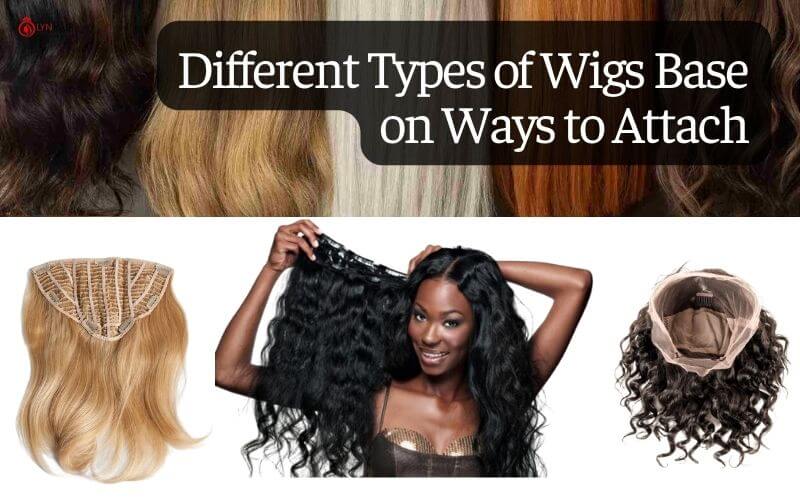
Glueless wigs
Glueless wigs are designed to be worn without the use of adhesive or glue. They typically come with adjustable straps, combs, or clips that secure the wig in place. These wigs are convenient and can be easily taken on and off without any mess or residue.
Glue-on wigs
Glue-on wigs are similar to glued or bonded wigs, but they involve attaching the entire wig cap to the scalp using adhesive. This method ensures a seamless and natural look but may require professional application for optimal results.
Clip-in wigs
Clip-in wigs are easy to attach and remove as they feature small clips or combs along the inside of the wig cap. These clips securely fasten the wig to your natural hair, making them a popular choice for those who want a temporary transformation without any commitment.
Sewn-In or Weave Wigs
Sewn-in or weave wigs are integrated with your natural hair through a sewing process. The wig is typically attached to tightly braided hair, providing a secure and long-lasting fit. This method is commonly used in hair extensions and weaves.
4. Different types of wigs base on Hair Material
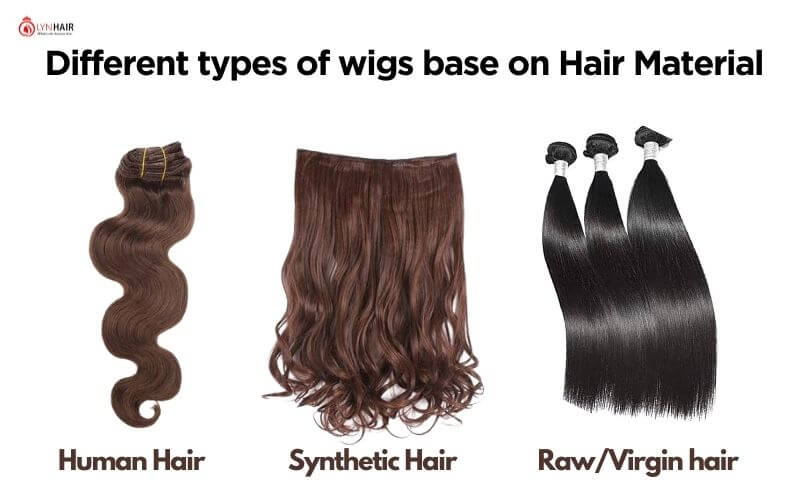
Human Hair Wigs
Remy wig : Remy wigs are crafted from human hair where the cuticle (the outer protective layer of the hair strand) remains intact and aligned in one direction. This ensures that the hair maintains its natural texture, shine, and manageability. Remy wigs are known for their high quality and realistic appearance.
Raw/Virgin hair wig: These wigs are made from unprocessed human hair, which means the hair has not been chemically treated, colored, or permed in any way. Raw or virgin hair wigs offer the purest, most natural look and feel, and they can be custom colored or styled to suit the wearer’s preferences.
Synthetic Hair Wigs
Synthetic hair wigs are constructed from synthetic fibers designed to mimic the look and feel of natural hair. They come in different styles, textures, and colors. While synthetic wigs are more budget-friendly and low-maintenance, they may have limitations when it comes to heat styling, as excessive heat can damage the fibers.
Blended Hair Wigs
Blended hair wigs combine both human hair and synthetic fibers. This blend aims to offer the benefits of both types: the natural appearance and styling versatility of human hair along with the affordability and ease of maintenance of synthetic hair. Blended wigs strike a balance between realism and cost-effectiveness.
5. Different types of wigs base Coverage
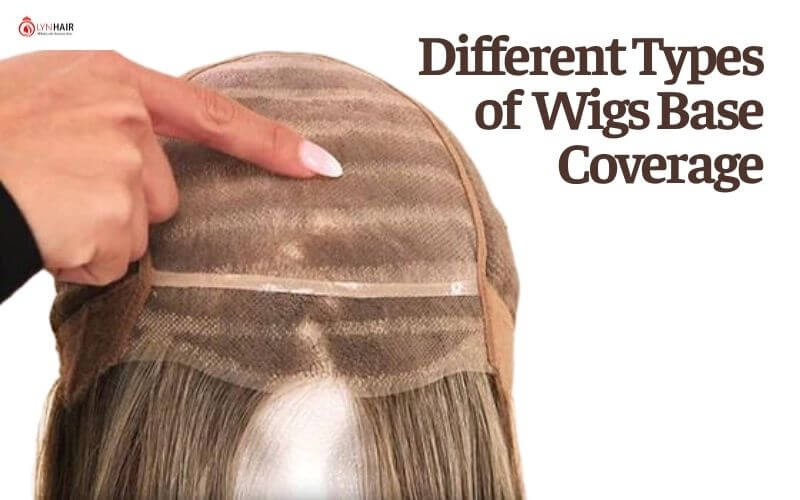
Full Wigs:
Full wigs, as the name suggests, provide complete coverage for the entire head. These wigs are designed to cover the wearer’s natural hair entirely and come in various styles, lengths, and materials. They are ideal for those who want a complete transformation or have hair loss or thinning issues across the entire scalp.
Half Wigs:
Half wigs, also known as half wigs with tracks or 3/4 wigs, cover only the back half of the head while leaving the front section exposed. They are designed to blend seamlessly with your natural hair, allowing you to leave out some of your own hair at the front for a natural look. Half wigs are popular for achieving added volume and length without covering the entire head.
Hair Toppers
Hair toppers, also referred to as wiglets or crown extensions, are designed to provide coverage and volume to specific areas of the scalp where hair may be thinning or sparse. They are typically smaller in size than full wigs and can be attached securely using clips or adhesive. Hair toppers offer a discreet solution for addressing localized hair loss or thinning, allowing you to maintain your natural hair at the sides and back.
6. Other types of wigs
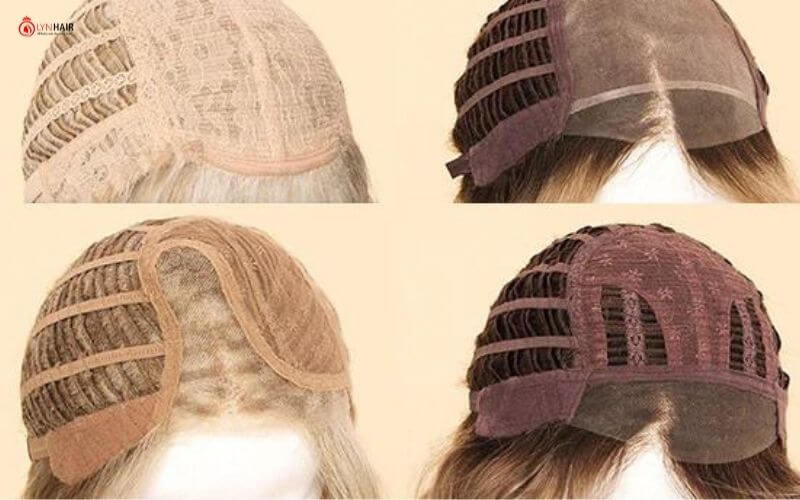
Transparent lace wig
Transparent lace wigs are made with a lace material that is see-through and blends seamlessly with various skin tones. This type of lace provides an incredibly natural-looking hairline, making it difficult to detect that you’re wearing a wig.
Silk Lace wigs
Silk lace wigs use a silk base material at the front instead of traditional lace. This gives the illusion of a scalp that’s smoother and less prone to irritation. Silk lace wigs are known for their comfort and natural look.
HD lace wigs
HD lace wigs feature a high-definition lace that is even finer and more undetectable than traditional lace. They offer a flawless, “invisible” hairline, making them a top choice for those seeking the most realistic appearance.
French Drawn Top Wig
French drawn top wigs are characterized by a special technique where each hair is hand-tied into a layer of silk mesh at the crown of the wig. This results in a supremely natural appearance at the scalp.
Non-Slip Wig
Non-slip wigs are designed with features like silicone strips or grips that help keep the wig securely in place on the wearer’s head, reducing the need for adhesive or additional securing methods.
100% Hand-Tied Wigs:
These wigs are meticulously crafted with each hair strand individually hand-tied to the wig cap. This labor-intensive process results in a lightweight and exceptionally natural look. They can be attached using various methods, including clips, adhesive, or combs.
Conclusion
You’ve just been introduced to an array of wig types available in the market. We trust that this article has provided valuable insights to guide you in selecting a wig style that aligns with your unique needs and personal tastes. Should you have any questions or concerns regarding wigs, please feel free to share with Lyn Hair in the comments below. Our team of experts is here to give the best answer.

